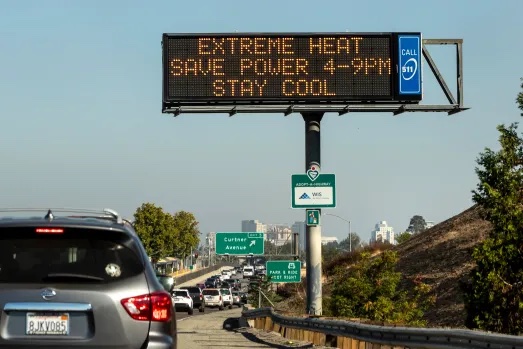Heatwaves and High Bills: The Urgent Need for a Carbon Tax in 2024
Summer 2024 has been a scorcher already—and it’s only July! In fact, more than 100 million Americans have been issued heat advisories, marking an unsettling trend: summer temperatures are heating up ing earlier and lasting longer. (Gone it seems are the days of nighttime relief, which creates its own problem.) As the mercury rises, so do the costs associated with keeping cool, specifically through energy costs related to increased use of air conditioning. As a result there is a disproportionate number of people who are faced with the financial burden of increased energy bills.
For many Americans, this isn’t just a question of comfort, but one of survival.
Over the past few years, heat deaths have steadily risen, from 1,563 in 2021, to 1,702 in 2022, and, provisionally, 2,297 deaths in 2023. According to the 2023 report by the World Meteorological Organization, “extreme heat is causes the excessive the greatest mortality of all extreme weather.”
Those who think we can’t afford to cap carbon emissions are mistaken; we can’t afford NOT to price carbon.
A staggering 1 in 5 U.S. households report reducing or giving up necessities like food and medicine to cover their energy bills, a sobering reminder that electricity bills are not static, and as temperatures climb, so too will the cost of staying cool.
Rising costs are particularly overbearing to low-income households, which the U.S. Department of Energy says spends a larger percentage of their income on home energy costs, or have a greater “energy burden” than others. Families living in the South are disproportionately affected by extreme heat. Mississippi, South Carolina, Alabama, Georgia, and Arkansas top the list of the states with the highest, low-income energy burden. But states in the Northeast are not immune. As extreme weather events and climate impacts hits these areas where central A/C is rare, elderly populations and those in lower socioeconomic brackets are also at risk.
The economic toll of climate inaction is staggering. A recent analysis estimates the cost of reducing greenhouse gas emissions is just one-sixth of the projected $38 trillion climate impact price tag by 2050. As such, we must ask ourselves: can we afford to ignore the broader, more devastating costs of climate change?
While the recently passed Inflation Reduction Act is a monumental step in addressing climate change, it falls short by not setting a price on carbon. Implementing a revenue-neutral, border-adjustable carbon tax that returns revenue to Americans either in the form of a payroll tax cut or a dividend, will not only incentivize polluters to reduce their carbon emissions but would help offset the effect of higher energy prices on vulnerable households. This approach ensures relief for Americans disproportionately impacted by rising energy costs and a warming climate.
Without a carbon tax, all these households can expect are continued higher costs associated with more extreme weather trends.
Energy costs are not the only economic burden posed by climate-related events. The unfortunate reality is that many people cannot afford to evacuate during hurricanes or other extreme weather disasters, leaving them vulnerable to the whims of nature.
Just like even a low-grade fever can make a human feel crummy, every fraction of a degree in temperature rise has profound implications on the planet—and by extension, those of us who live on it. As we face another sweltering summer, likely the hottest on record, it’s imperative that we take bold action.
Implementing a carbon tax is the smart policy we need to get on the books now. We can’t afford to wait.
Originally written for and published on RealClear Energy.

